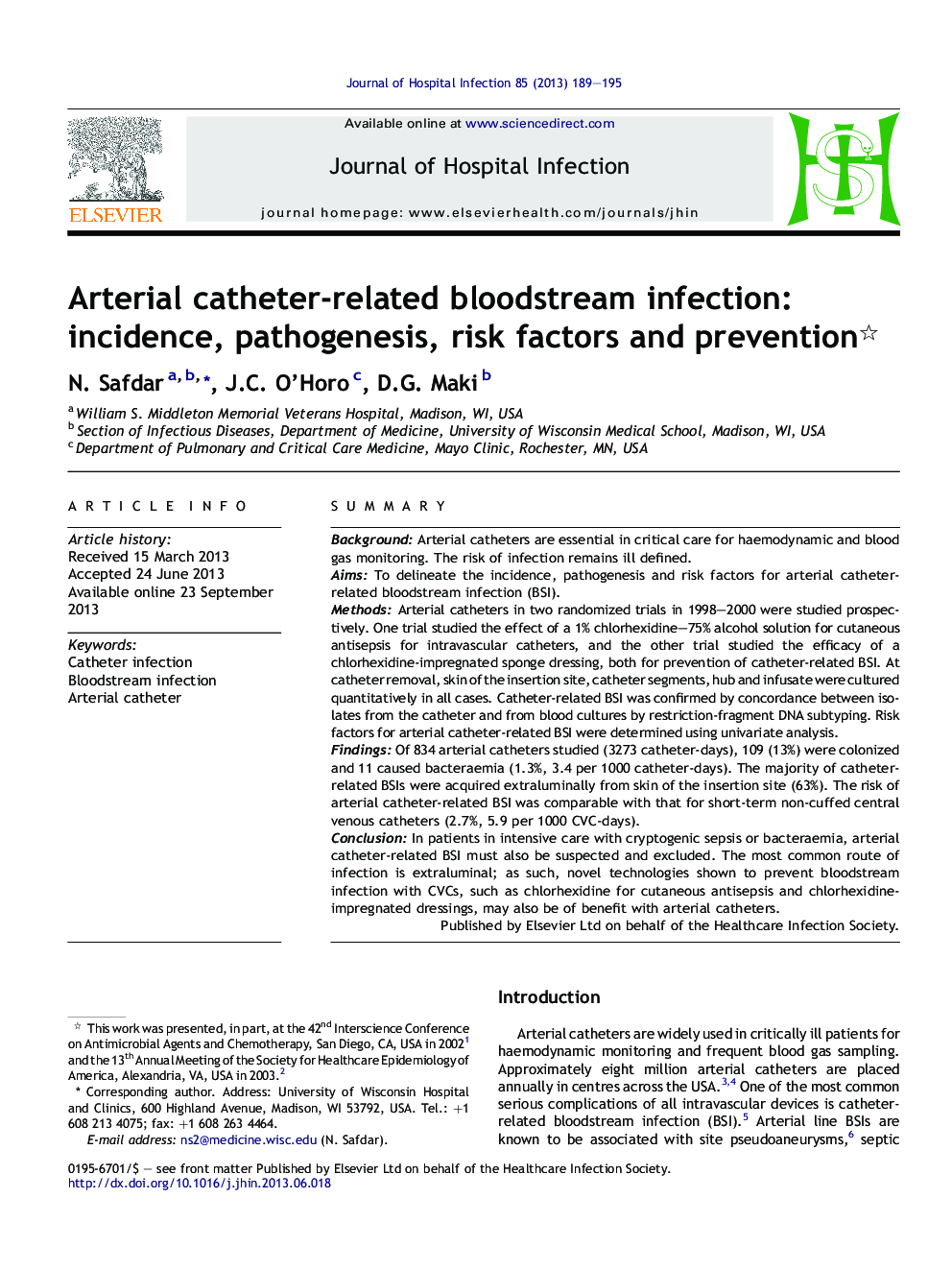| Article ID | Journal | Published Year | Pages | File Type |
|---|---|---|---|---|
| 3371616 | Journal of Hospital Infection | 2013 | 7 Pages |
SummaryBackgroundArterial catheters are essential in critical care for haemodynamic and blood gas monitoring. The risk of infection remains ill defined.AimsTo delineate the incidence, pathogenesis and risk factors for arterial catheter-related bloodstream infection (BSI).MethodsArterial catheters in two randomized trials in 1998–2000 were studied prospectively. One trial studied the effect of a 1% chlorhexidine–75% alcohol solution for cutaneous antisepsis for intravascular catheters, and the other trial studied the efficacy of a chlorhexidine-impregnated sponge dressing, both for prevention of catheter-related BSI. At catheter removal, skin of the insertion site, catheter segments, hub and infusate were cultured quantitatively in all cases. Catheter-related BSI was confirmed by concordance between isolates from the catheter and from blood cultures by restriction-fragment DNA subtyping. Risk factors for arterial catheter-related BSI were determined using univariate analysis.FindingsOf 834 arterial catheters studied (3273 catheter-days), 109 (13%) were colonized and 11 caused bacteraemia (1.3%, 3.4 per 1000 catheter-days). The majority of catheter-related BSIs were acquired extraluminally from skin of the insertion site (63%). The risk of arterial catheter-related BSI was comparable with that for short-term non-cuffed central venous catheters (2.7%, 5.9 per 1000 CVC-days).ConclusionIn patients in intensive care with cryptogenic sepsis or bacteraemia, arterial catheter-related BSI must also be suspected and excluded. The most common route of infection is extraluminal; as such, novel technologies shown to prevent bloodstream infection with CVCs, such as chlorhexidine for cutaneous antisepsis and chlorhexidine-impregnated dressings, may also be of benefit with arterial catheters.
